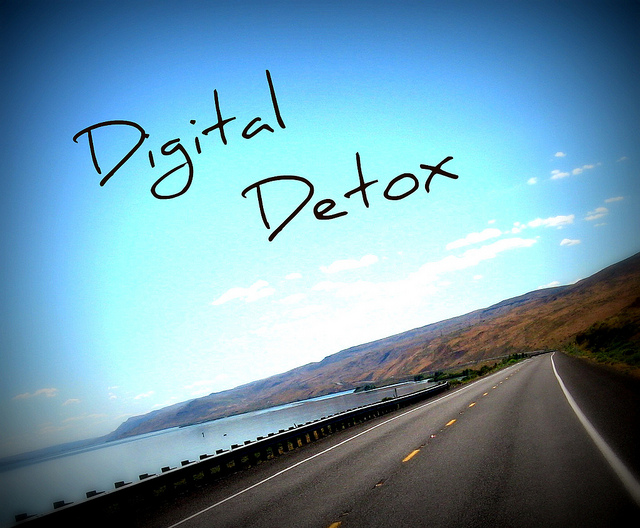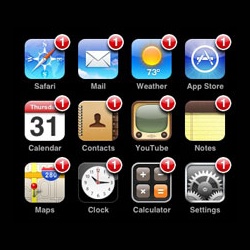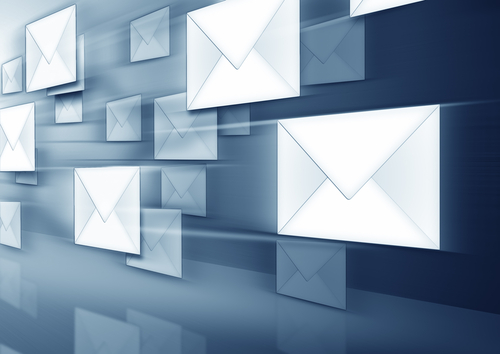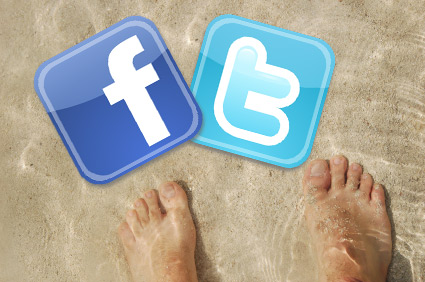Boost Your Focus with a Digital Detox

Our digital-obsessed culture tends to obscure just how rigid a stranglehold technology has on our time. Try out these tools and tips to better balance your online and offline lives.
In his 1981 satire The Crystal Bucket, Clive James remarked, “It is only when they go wrong that machines remind you how powerful they are.” We live in a world so reliant on digital technology and internet infrastructure that it’s difficult to imagine one without them. It’s not until the electronic adjuncts we so depend on fail, break or are otherwise removed from our daily routines that we come to grips with how rigid a stranglehold they have on our time and attention. That’s because while technology has repeatedly transformed our lives, every major advancement inevitably translates to increased dependence on the benefits it confers.
Our days are deeply programmed to accommodate a variety of digital activities that have become just as much a part of our daily regimen as brushing our teeth. Our circadian clocks subconsciously spur us to feed our Facebook fix throughout the workday. We pull our smartphones from our pockets when our friend is saying something deserving of our full attention. For many of us, our phone is the first thing we look at in the morning when we wake up and the last thing we interface with before we go to sleep. The abundance of online interaction has revealed just how vulnerable we are to the forces of distraction.
Technology’s transformative impact on our lives is certainly welcomed in its ability to save us great time and energy. Given too much attention, however, it can cause us to lose focus on more important things, like our jobs, our relationships and even our life goals. Without establishing some ground rules for the services and devices we use every day, they can become less a useful tool than a perpetual distraction. Whether you’re looking to make some long-term changes to your internet and smartphone usage or more temporary adjustments to focus on specific goals, try out these tools and tips to better balance your online and offline life. Because now more than ever, we sometimes need a digital detox.
1. Disable push notifications
 How many notifications do you receive every hour? For me it’s around 7-10. And it’s not because I’m popular or unusually deserving of these provocations to engage. It’s because the services, apps and platforms we interact with are adding more and more ways to capture our attention. Facebook, Google+, Twitter, Instagram, Pinterest, Words With Friends. Each has its medley of notices to divert your focus away from other things and, if left unchecked, will result in a notification windstorm before you’ve even sat down to breakfast.
How many notifications do you receive every hour? For me it’s around 7-10. And it’s not because I’m popular or unusually deserving of these provocations to engage. It’s because the services, apps and platforms we interact with are adding more and more ways to capture our attention. Facebook, Google+, Twitter, Instagram, Pinterest, Words With Friends. Each has its medley of notices to divert your focus away from other things and, if left unchecked, will result in a notification windstorm before you’ve even sat down to breakfast.
The best way to regulate this is to disable push notifications within each individual service or app. Since most require your email address to sign up, your account will be linked to your email or even your mobile number if you provide it. For many of these, email notifications are enabled by default. Don’t allow this. Navigate to the account settings of each service and disable all email and mobile notifications. This way, you can choose when to interact rather than the other way around.
Advancing this one step further, on iOS and Android you can globally disable email notifications so your phone won’t ever harass you about your overloaded inbox. You can also set your smartphone on silent to ensure your attention is laser-focused on the task at hand. Of all the suggestions here, reducing your notification rate is the most effective way of suppressing your digital interactions.
2. Check email twice a day
 We are obsessed with email. It is the default method of communication in today’s culture, and it isn’t going away any time soon. For me, even an organized and properly sorted email account consumes too much of my time. Indeed, between work and personal inboxes, reading and responding to email is likely what we spend the bulk of our time doing on any given day. How many times have we been working hard on a project or engaged in a train of thought when email completely derails our focus? This all-too-common scenario can instantly kill our productivity if we allow it. Our best defense is to remove the distraction.
We are obsessed with email. It is the default method of communication in today’s culture, and it isn’t going away any time soon. For me, even an organized and properly sorted email account consumes too much of my time. Indeed, between work and personal inboxes, reading and responding to email is likely what we spend the bulk of our time doing on any given day. How many times have we been working hard on a project or engaged in a train of thought when email completely derails our focus? This all-too-common scenario can instantly kill our productivity if we allow it. Our best defense is to remove the distraction.
If you’ve disabled all email push notices as above, you’ll probably find yourself instinctively checking your inbox every 15 minutes or so to make sure something wasn’t missed. This is a waste of time. Instead, resolve to check your personal email just twice a day at specified times. We often forget that constant monitoring and quick email turnaround is a relatively recent development. Rather, opening my inbox after lunch and a couple of hours before bed has worked well. I’m able to meet deadlines and my personal goals much more efficiently this way. It can be challenging at first, but does become easier over time.
The twice daily method can be applied not only to your personal email but to your work email as well. Most of us in the business world use Outlook, so we’re all well familiar with the popups that invade our screen each time a new message is received and interrupt whatever we were working on. By default, these desktop alerts are turned on. To disable this in Outlook click File –> Options –> Mail, and under Message Arrival uncheck the Display a desktop alert box. After that’s done, try only checking your inbox once in the morning and again in the afternoon. As long as you’re not expecting a particularly important or urgent email, you’ll likely find your workday more productive as you are exercising greater control over your schedule.
Adhering to a more periodic email philosophy enables us to use email on our own terms and break from our subconscious habits.
Image via Shutterstock
3. Take a social media vacation
 Similar advice follows for social media usage, perhaps the greatest time sink of our increasingly digital age. While you can try to limit your Facebook sessions to twice a day, that is just not enough for many people. An innocent session after work can spill into two hours as we aimlessly drift from Facebook to Reddit to Pinterest, ignorant all the while of priorities far more deserving of our time. That new recipe your friend just pinned to her board is probably tasty, but you might let it escape your attention when there are more pressing matters to attend to.
Similar advice follows for social media usage, perhaps the greatest time sink of our increasingly digital age. While you can try to limit your Facebook sessions to twice a day, that is just not enough for many people. An innocent session after work can spill into two hours as we aimlessly drift from Facebook to Reddit to Pinterest, ignorant all the while of priorities far more deserving of our time. That new recipe your friend just pinned to her board is probably tasty, but you might let it escape your attention when there are more pressing matters to attend to.
I’m as guilty of this as anyone. To combat my propensity for social media saturation I designate at least one day a week as “social media-free.” I’ll often put a pause on Facebook and other of my favorite spaces on the weekends. You can then devote those days to pursuing your goals, meeting your deadlines or completing work you’ve been procrastinating.
4. Censor your internet sessions
 The more we use the internet the more we are vulnerable to its vacuum-like properties on our time. If you find that every new tab and search window results in a failed attempt at getting things done, it might be time to take more drastic measures. Ironically, there are programs on the internet to help us with our internet addiction. I’ve tried out the following programs and can personally attest to their effectiveness.
The more we use the internet the more we are vulnerable to its vacuum-like properties on our time. If you find that every new tab and search window results in a failed attempt at getting things done, it might be time to take more drastic measures. Ironically, there are programs on the internet to help us with our internet addiction. I’ve tried out the following programs and can personally attest to their effectiveness.
SelfControl (Mac OS) / ColdTurkey (Windows). This pair of web apps serves as your personal digital goalie to preclude you from accessing time-draining websites. You simply specify the sites to blacklist as well as the duration, and the program does the rest. Forget about bypassing the block if you change your mind and want to watch one more episode of How I Met Your Mother on Netflix. Uninstalling the program, ending the process or task in task manager and even restarting your computer will not revert its effects. You must wait for the timer to run out. Both programs above do the same exact thing for their respective platform. The blocks work across all major browsers. Note that the block sometimes takes a minute or two to go into effect if you already have your browser open, but it will kick in immediately if you restart your browser.
Freedom (Windows, Mac OS). This program ratchets up the intensity by literally locking down the internet in full for the duration that you specify. If you want to access the internet before the timer is finished, you’re forced to reboot your computer, making you seriously reconsider whether it’s truly worth it to refresh that news feed one more time.
Image via YFS Magazine
5. Hide the Google+ notifications box
 Now that Google has its own social network, Google+ is now part of the omnipresent Google pane and is accompanied by a notifications box. This square box, with its real-time updates and oh-so-inviting scarlet design, notifies you about everything Google deems relevant, including when a spam account adds you to their circles. As long as you’re signed into your Google account, no matter which piece of the Google ecosystem you happen to be using notifications will be front and center. Even if you disable all push notifications, they will still appear across all Google sites in the notifications box.
Now that Google has its own social network, Google+ is now part of the omnipresent Google pane and is accompanied by a notifications box. This square box, with its real-time updates and oh-so-inviting scarlet design, notifies you about everything Google deems relevant, including when a spam account adds you to their circles. As long as you’re signed into your Google account, no matter which piece of the Google ecosystem you happen to be using notifications will be front and center. Even if you disable all push notifications, they will still appear across all Google sites in the notifications box.
You can delete your Google+ content in full if you want, but if you’d rather just hide that pesky square box, then I recommend the following browser extensions for Chrome and Firefox.
Chrome: Hide Google+ Notification. This extension intelligently blocks the notifications box across all Google sites except Google+ (where you’ll likely desire it the most).
Firefox: It’s a bit less straightforward for FF users. First you’ll need to install Greasemonkey here. Then install the user script here. Unfortunately, I found this method inconsistent across different FF versions and Google sites, but it’s the only such script I’ve found that works in Firefox. Let me know in the comments if you’ve come across a better alternative.
Image via Mickmel.com
How do you keep your digital appetite in check? Have you found other methods or tools that are effective at suppressing distractions? Let me know. If you leave a good tip in the comments, I’ll update the article!
Feature image by Jules2445


Comments